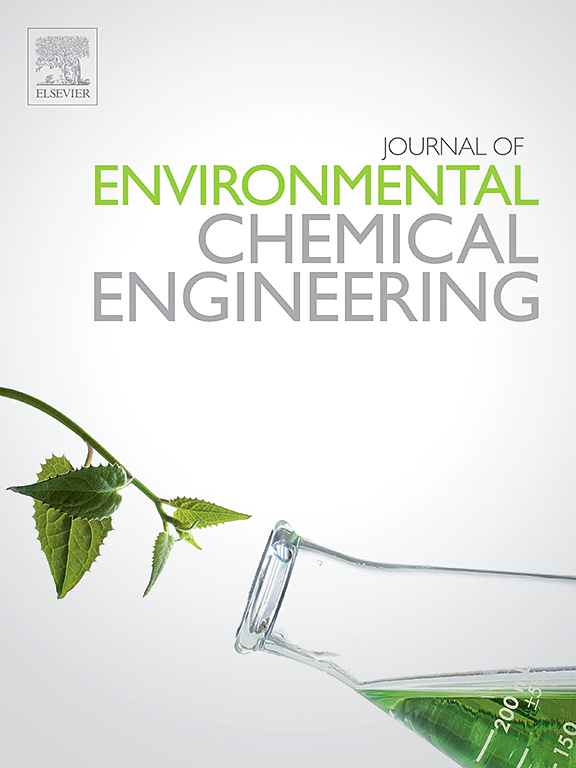建筑中可持续能源与环境保护的光催化:表面工程与新兴合成综述
IF 7.4
2区 工程技术
Q1 ENGINEERING, CHEMICAL
引用次数: 0
摘要
全球能源需求持续增长,化石燃料消耗导致的环境危机不断升级,凸显了对可持续技术的迫切需求。光催化技术利用太阳能驱动氧化还原反应,同时生产清洁燃料和降解污染物,已经显示出多种应用的巨大潜力。然而,传统的光催化剂受到固有的限制,如可见光吸收受限、电子-空穴复合快速、结构稳定性不足等。此外,外部挑战,包括传质限制、催化剂失活和有毒副产物的形成,进一步阻碍了实际实施。现有的综述通常孤立地处理这些问题,或侧重于单一材料(例如TiO2),因此缺乏全面的、最新的观点。为了填补这一空白,本文系统地总结和批判性地评估了阻碍光催化技术实际应用的关键瓶颈。它深入概述了旨在克服这些限制的先进表面功能化和界面工程策略,包括铁电极化,水凝胶支撑的复合结构,缺陷工程和异质结/同质结系统,同时彻底阐明了这些策略之间的协同效应。此外,该综述通过比较新兴的低碳和可扩展的合成方法,如绿色生物合成、微流体、等离子体辅助电解和机械化学,强调了它们在工业规模生产中的潜力。最后,概述了未来的研究方向,强调了机器学习、跨学科集成和可扩展制造在将光催化创新从实验室环境过渡到工业应用中的关键作用。总的来说,这篇综述提供了一个全面的分析框架和战略见解,以促进光催化从实验室研究到实际工业规模实施的转变。本文章由计算机程序翻译,如有差异,请以英文原文为准。
Photocatalysis for sustainable energy and environmental protection in construction: A review on surface engineering and emerging synthesis
The sustained growth in global energy demand and escalating environmental crises resulting from fossil fuel consumption underscore the urgent need for sustainable technologies. Photocatalysis, which harnesses solar energy to drive redox reactions for concurrent clean fuel production and pollutant degradation, has demonstrated significant potential for diverse applications. However, conventional photocatalysts are hindered by intrinsic limitations such as restricted visible-light absorption, rapid electron–hole recombination, and insufficient structural stability. In addition, extrinsic challenges, including mass transfer constraints, catalyst deactivation, and the formation of toxic by-products, further impede practical implementation. Existing reviews typically address these issues in isolation or focus on single materials (e.g., TiO2), thereby lacking a comprehensive, state-of-the-art perspective. To fill this gap, this review systematically summarizes and critically evaluates the key bottlenecks hindering the practical application of photocatalytic technologies. It provides an in-depth overview of advanced surface functionalization and interfacial engineering strategies designed to overcome these limitations, including ferroelectric polarization, hydrogel-supported composite structures, defect engineering, and heterojunction/homojunction systems, while thoroughly elucidating the synergistic effects among these strategies. Furthermore, the review highlights emerging low-carbon and scalable synthetic approaches such as green biosynthesis, microfluidics, plasma-assisted electrolysis, and mechanochemistry, by comparing their potential for industrial-scale production. Finally, it outlines future research directions, emphasizing the pivotal roles of machine learning, interdisciplinary integration, and scalable manufacturing in transitioning photocatalytic innovations from laboratory settings to industrial applications. Overall, this review offers a comprehensive analytical framework and strategic insights to facilitate the transformation of photocatalysis from laboratory research to practical industrial-scale implementation.
求助全文
通过发布文献求助,成功后即可免费获取论文全文。
去求助
来源期刊

Journal of Environmental Chemical Engineering
Environmental Science-Pollution
CiteScore
11.40
自引率
6.50%
发文量
2017
审稿时长
27 days
期刊介绍:
The Journal of Environmental Chemical Engineering (JECE) serves as a platform for the dissemination of original and innovative research focusing on the advancement of environmentally-friendly, sustainable technologies. JECE emphasizes the transition towards a carbon-neutral circular economy and a self-sufficient bio-based economy. Topics covered include soil, water, wastewater, and air decontamination; pollution monitoring, prevention, and control; advanced analytics, sensors, impact and risk assessment methodologies in environmental chemical engineering; resource recovery (water, nutrients, materials, energy); industrial ecology; valorization of waste streams; waste management (including e-waste); climate-water-energy-food nexus; novel materials for environmental, chemical, and energy applications; sustainability and environmental safety; water digitalization, water data science, and machine learning; process integration and intensification; recent developments in green chemistry for synthesis, catalysis, and energy; and original research on contaminants of emerging concern, persistent chemicals, and priority substances, including microplastics, nanoplastics, nanomaterials, micropollutants, antimicrobial resistance genes, and emerging pathogens (viruses, bacteria, parasites) of environmental significance.
 求助内容:
求助内容: 应助结果提醒方式:
应助结果提醒方式:


